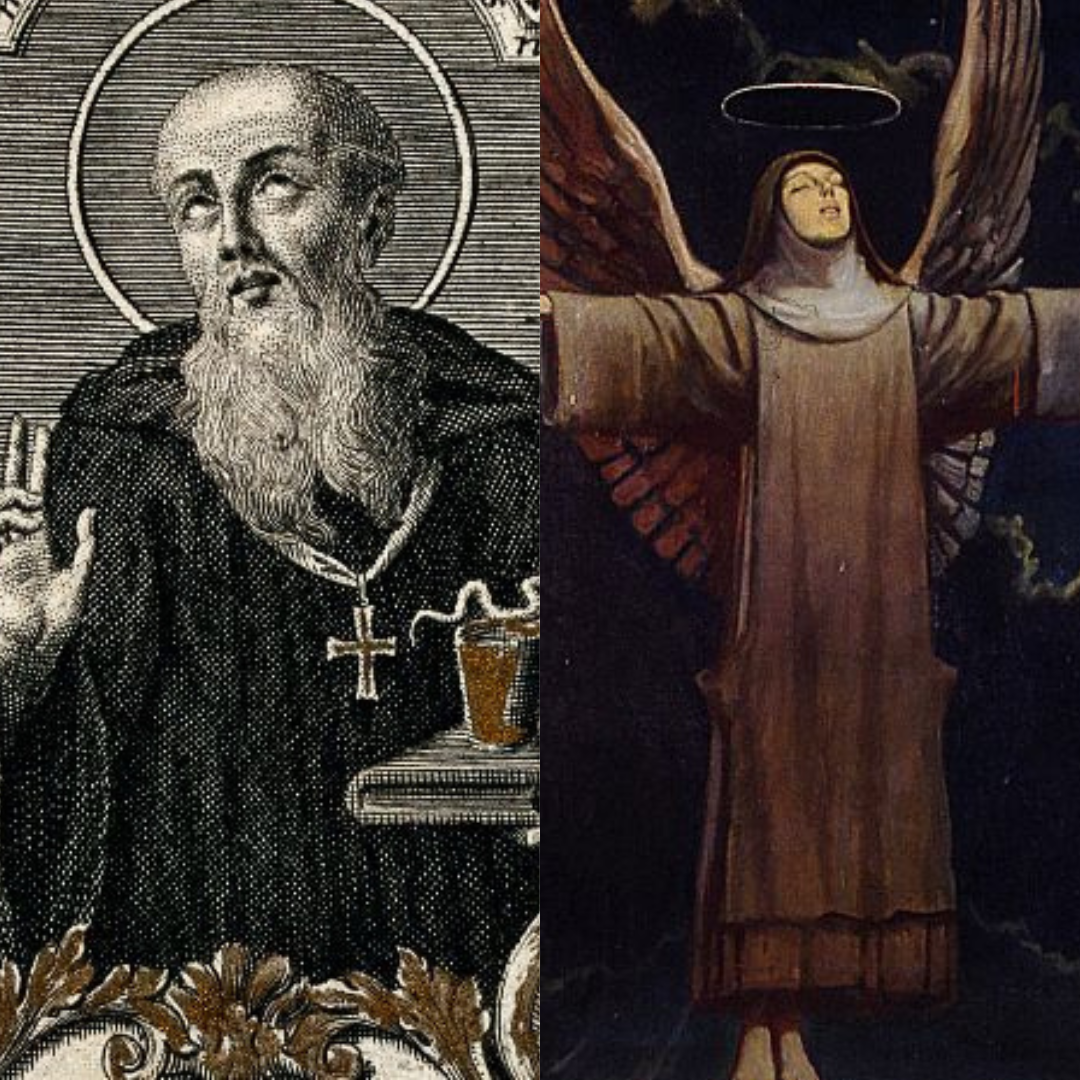Today’s Halloween may not much resemble the old way of celebrating All Saints’ Day, but some saints’ stories fit well with the new emphasis on graveyards and ghosts.
1) Saint Benedict
Saint Benedict (480–547) is widely reported to have inserted himself in medieval affairs.
He appeared to a monk at Fleury during the 10th century, for instance, and threatened to leave the buildings of the monastery when the monks tried to thwart the reforms of Odo of Cluny, according to a story recounted in Thomas Head’s 1990 book, “Hagiography and the Cult of Saints”.
2) Saint Joan of Arc
Saint Joan of Arc (1412–1431) might be called the patron saint of Catholic apparitions since she was burned at the stake at least partly because she refused to renounce that she heard the voices of Saint Michael, Saint Catherine, and Saint Margaret.
3. Saint Catherine of Genoa
Several friends of Saint Catherine of Genoa (1447–1510) actually saw or otherwise experienced her going to paradise when she died on Dec. 14, and her confessor had a clear vision of her sufferings on earth while celebrating Mass the next day.
4. Saint Faustina
Saint Faustina Kowalska (1905–1938) reported in her diary seeing Saint Joseph, Saint Michael, and Saint Barbara.
5. Saint Christina the Astonishing
Perhaps most fitting is the little-known Saint Christina the Astonishing (1150–1224).
She died three times, according to biographer Thomas de Cantimpré’s “Vita Christina Mirabilis”, which was written eight years after her (final) death.
The first time she died, God asked her to take on suffering to save souls. She was reportedly resurrected during her funeral Mass and flew up to the ceiling of the church, apparently unable to stand the smell of sinful human flesh.
For years she suffered terrible pains, including coldness and burns, without visible damage to her body.
Later, when a dear friend of Christina’s, Count Louis of Looz, was dying, he called her into his room and told her all his sins, hoping to move her to pray for him. After his death, he appeared to her, asking her for help with purgatory, and she agreed to suffer half his punishment.
“Having taken on these burdens,” writes her biographer, according to a 1986 translation by Margot H. King, “for a long time afterward, you might have seen Christina in the middle of the night being tormented with burning smoke and at other times with freezing cold. Indeed, she suffered torments in turn according to what the soul of the Count was suffering.”
The second time she died, she was an old woman living in a convent, but she returned when the superior of the convent upbraided Christina for not answering a question she had asked before she went.
Christina answered the question, then died for the last time.
Anticipating skepticism, the biographer comments: “We admit — and it is true — that our account surpasses all human understanding inasmuch as these things could by no means have occurred according to the course of nature, although such things are possible to the Creator.”
This article originally appeared in the National Catholic Register.

